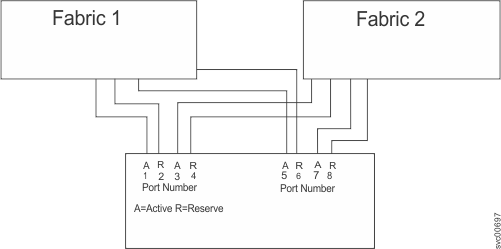The Lenovo Storage V series supports all models of Compellent systems (storage controllers).
Supported firmware levels for the Compellent system
Concurrent maintenance on the Compellent system
Concurrent maintenance is the capability to perform I/O operations to a Compellent system while simultaneously performing maintenance operations on it. You can perform nondisruptive maintenance procedures concurrently on the following components:
- Compellent storage system
- Disk drive
User interfaces on the Compellent system
The Compellent Storage Center GUI (graphical user interface) is used to manage the storage center. Compellent provides access to your Compellent system from any standard Internet browser or from any host computer via a local area network (LAN) or a wide area network (WAN).
Logical unit creation, deletion, and migration for Compellent systems
Before you create, delete, or migrate logical units, you must read the storage configuration guidelines that are specified in the Compellent documentation.
Cabling the Compellent system

Using the Compellent GUI to create storage pools
On the Compellent storage system, a storage pool is a collection of physical disks. In most implementations, all the disks are allocated to the assigned pool, and the data is automatically arranged into a tier of storage.
- In the lower-left pane, click Disks once. Left-click and select Manage Unassigned Disks.
- In the upper right, click Storage Management. From the list, select .
Using the Compellent GUI to create volumes
- In the lower-left pane, click Storage once. Left-click and select Create Volume.
- In the upper right, click Storage Management. From the list, select .
Using the Compellent GUI to create servers
To assign storage to the Lenovo Storage V series, you must create a server object that represents each storage node in a Lenovo Storage V seriesclustered system.
- In the lower-left pane, click Server once. Left-click and select Create Server.
- In the upper right, click Storage Management. From the list, select .
When you create a server object for a Lenovo Storage V series storage node, select as the operating system. After you create all your storage nodes as servers, it is recommended that you create a server cluster and add all related nodes to it.
Using the Compellent GUI to map volumes to servers
- In the Servers section in the lower-left pane, click once on the server or server cluster object. Left-click and select Map Volume to Server.
- In the upper right, click Storage Management. From the list, select .
Migrating volumes
You can use the standard migration procedure to migrate volumes from the Compellent system to the Lenovo Storage V series system.
Sharing the Compellent between a host and the Lenovo Storage V series
You can configure your environment so that other hosts can communicate with the Compellent system for storage requirements that fall outside of the Lenovo Storage V series. You can also configure hosts that communicate with the Lenovo Storage V series directly for storage to also communicate directly with the Compellent Storage Center for storage. Ensure that you carefully plan and have suitable documentation before you follow either of these scenarios.
Quorum disks on the Compellent system
The Lenovo Storage V series can use logical units (LUs) that are exported by the Compellent system as quorum disks.
Advanced functions for the Compellent system
Compellent advanced functions are not supported with Lenovo Storage V series.